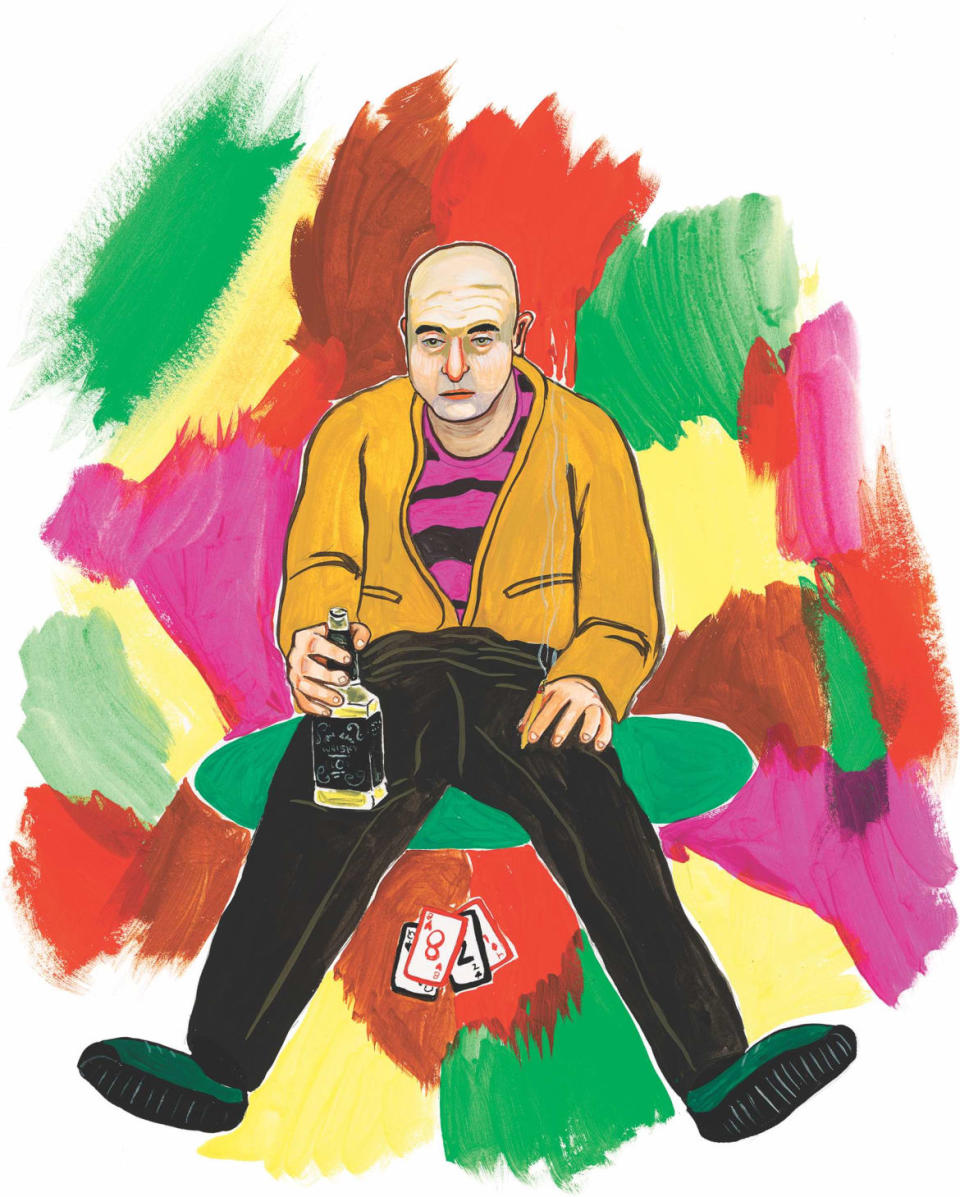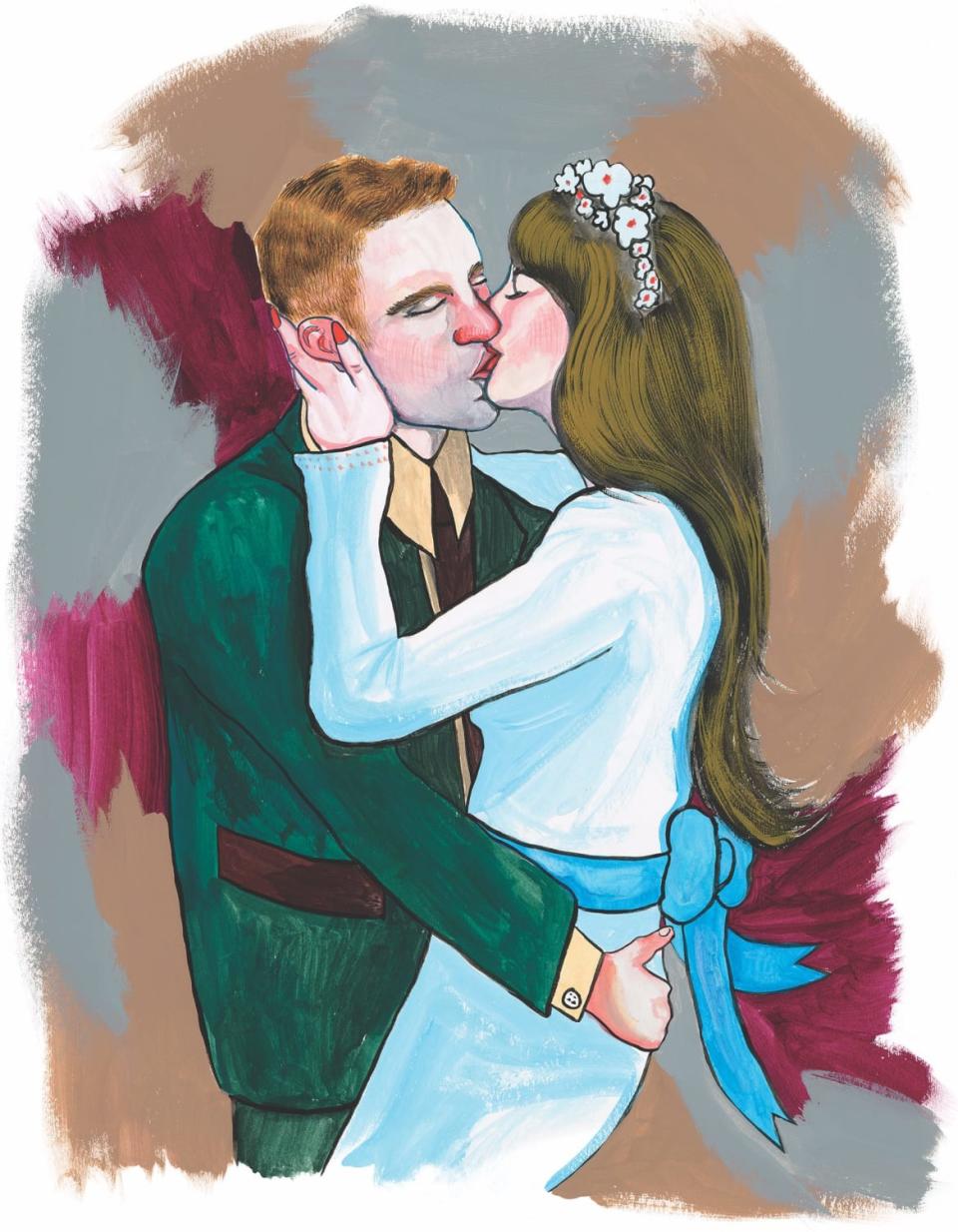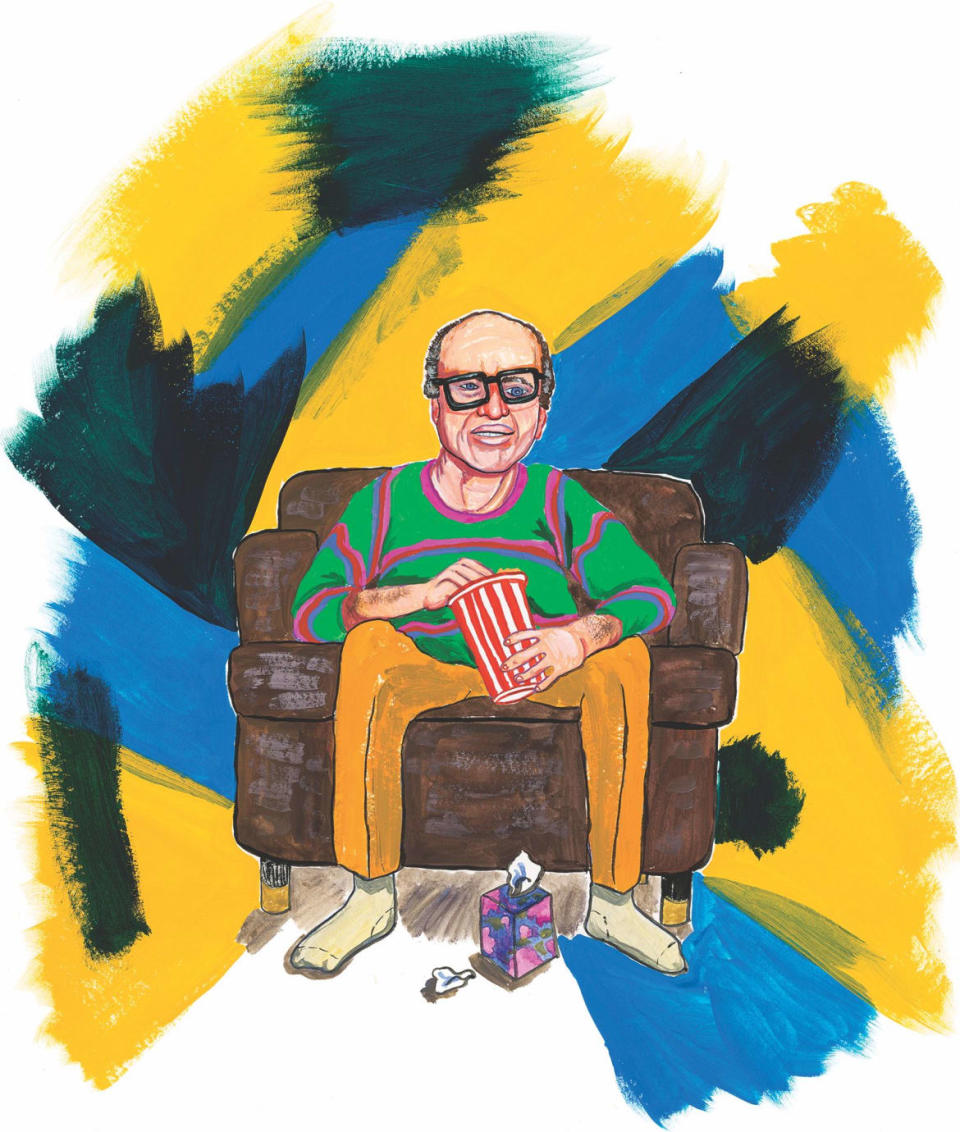‘Quantum Criminals’ Is the Steely Dan Book That’s as Darkly Funny as Their Songs

- Oops!Something went wrong.Please try again later.
- Oops!Something went wrong.Please try again later.
The new book, Quantum Criminals: Ramblers, Wild Gamblers, and other Sole Survivors From the Songs of Steely Dan, is the delightful result of an author not only understanding their subject, but emotionally bonding with it. In this case, it’s the two co-authors, Alex Pappademas (who writes the words) and Joan LeMay (who paints the pictures), who unfold the “story” of Steely Dan by way of the flawed, often tragic characters depicted in the band’s discography.
Though the book dips in and out of biographical episodes of Steely Dan’s creative team and only permanent members (Donald Fagen and the late Walter Becker), it’s the vivid characters they created—the miscreants, the heartbroken suicidal jazz fans, the famous San Francisco acid dealers—that provide the rhythm of Quantum Criminals.
The Dan were mostly a band of the ’70s, though they did win Album of the Year at the 2000 Grammy Awards for their surprisingly good comeback record, Two Against Nature—sparking an anti-Boomer furor that ranks slightly ahead of that time the lip-synching R&B duo Milli Vanilli won Best New Artist, as far as Grammy outrages go.
How Classic Rock Turned Into a Film Noir Nightmare
Eschewing the road for the studio fairly early in their career, Fagen and Becker produced smooth pop hooks, blisteringly hot rock guitar solos, and bebop-inflicted blue eyed soul. And for notoriously obsessive perfectionists, they weren’t shy about infusing humor into their music (always a risky choice).
Though they had some pop hits and remain a staple of classic rock radio to this day, Steely Dan has also always been a niche unto themselves. They have plenty of casual fans, not every one of them is a hyper-analytical completist maniac (though there is no shortage of such pedants among the Dandom).

Jack from “Do It Again.”
To the unimpressed, the Dan can sound like the soundtrack to a supermarket visit. But if you can hear the music, the Dan is both easy and challenging—relaxed grooves, audacious melodies, and impeccable musicianship laying the bed for lyrics that sound like they’re ripped from a pulp crime novel written by beat poets.
And the book gets that. To demonstrate, here are the opening words of Quantum Criminals: “The first person you meet in a Steely Dan song is a guy named Jack. In the first verse of ‘Do It Again,’ Jack kills a man in anger and then evades death by hanging because it’s the hangman’s day off.”
Dark, abrupt, take no prisoners kinda stuff. And also quite funny.
Not coincidentally, Steely Dan samples provided the beats for too many hip-hop songs to count. But there was a dark side to this connection.

Babs and Clean Willie from “Haitian Divorce.”
Fagen and Becker took all the royalties and songwriting credit for a young rap group’s only hit song—after the track was released without clearing the sample use of the Steely Dan song, “Black Cow.” In the Quantum Criminals chapter covering this episode, Fagen and Becker come across as petty and cruel to the hapless one-hit wonder rappers, Lord Tariq and Peter Gunz. But they also seem like stone-cold gangsters, bad guys in one of their own songs.
Each chapter is essentially named after a character in a Steely Dan song, a member of the band, or another character in the near-Dan universe. The words are accompanied by deeply gazing, brightly colored portraits of said characters. It’s through their stories that the story of the band takes shape.
There’s nothing linear about this book, but the wry prose and evocative (sometimes startling) illustrations suit the band—and its fans. There’s as much deconstructing of song narratives as there is band biography.

Mr. LaPage from “Everyone’s Gone to the Movies.”
In the chapter, “Mr. LaPage,” the music and lyrics of “Everyone’s Gone to the Movies” get a modern-day contextualization. “Donald’s vocal is so poker-faced you could miss the fact that this is an up-tempo song about what a fun guy the neighborhood pedophile is.” The accompanying portrait of Mr. LaPage is appropriately revolting.
Babs and Clean Willie, the subjects of “Haitian Divorce,” get their moment. As does the doomed bookkeeper’s son and his case of dynamite in “Don’t Take Me Alive.” Even occasional collaborators like Michael McDonald get to have their say, as do the Dan’s fellow ’70s smooth rocker frenemies, the Eagles.
How I Learned to Stop Worrying and Love the Grateful Dead
But a particular delight is the chapter “Owsley,” for the protagonist of what is probably the funkiest track in the Dan oeuvre, “Kid Charlemagne”—which also happens to be about one of the very few Dan characters who’s based on a real human being.
Owsley “Bear” Stanley was a rich kid from a prominent family who, through both chemistry and superior salesmanship, was one of the Johnny Appleseeds of LSD in the ’60s. His name appears in Tom Wolfe’s The Electric Kool Aid Acid Test. He did several stints working as a sound guy for The Grateful Dead—who also wrote a song about him, “Alice D. Millionaire.” (Get it? LSD Millionaire.) And he’s the guy Donald Fagen channels when he sings, “Clean this mess up, ‘else we’ll all end up in jail. Those test tubes and the scale…just get it all out of here!”
These are ridiculous lyrics matched with infectious beats, sung passionately and unironically. This is a portrait of an insanely drawn character, one that logic says should not exist—but he does. It’s a combination of content that simply should not work. But it does, because it’s the Dan. (As I learned in the book, the venerable rock critic Robert Christgau once called Steely Dan “the Grateful Dead of bad vibes,” which is pretty much perfect.)
Quantum Criminals understands the paradoxical nature of Steely Dan, and the book embraces that chaos. It’s not a paean to “great men” of classic rock, nor is it a fan service love letter. But it is most definitely the right book about the correct band.
Get the Daily Beast's biggest scoops and scandals delivered right to your inbox. Sign up now.
Stay informed and gain unlimited access to the Daily Beast's unmatched reporting. Subscribe now.

